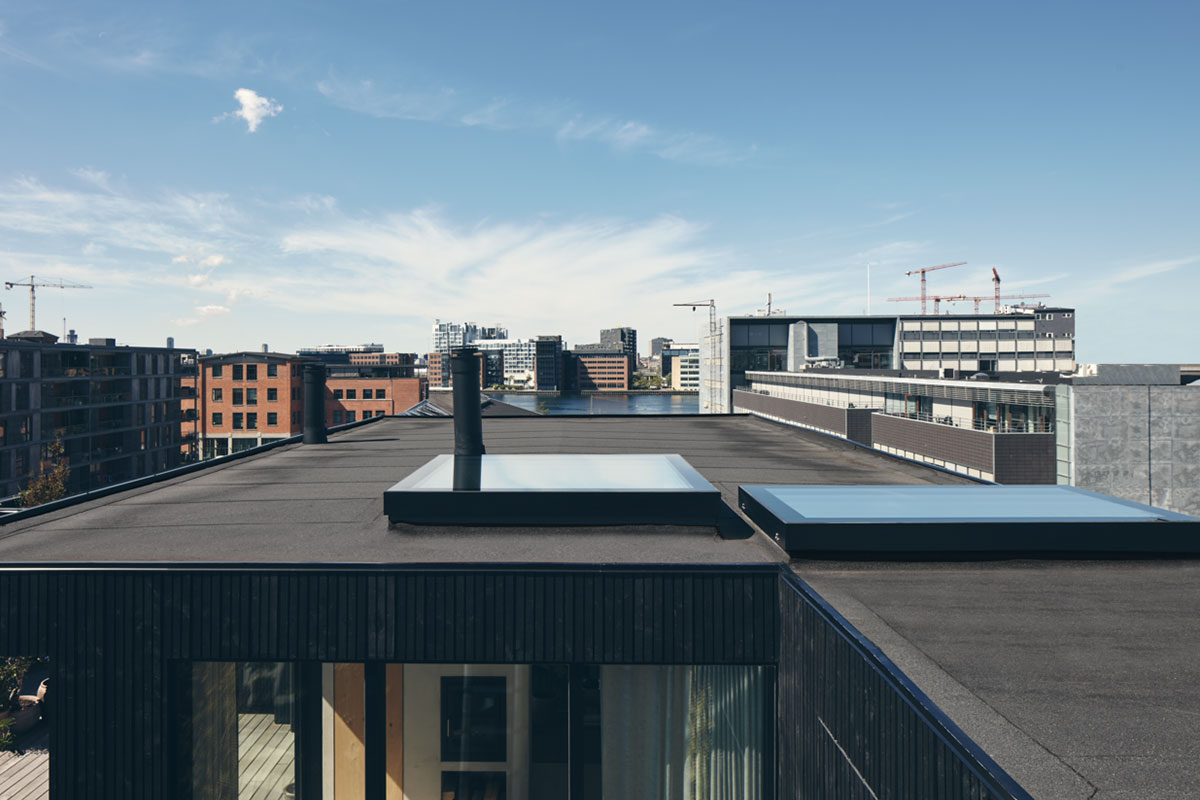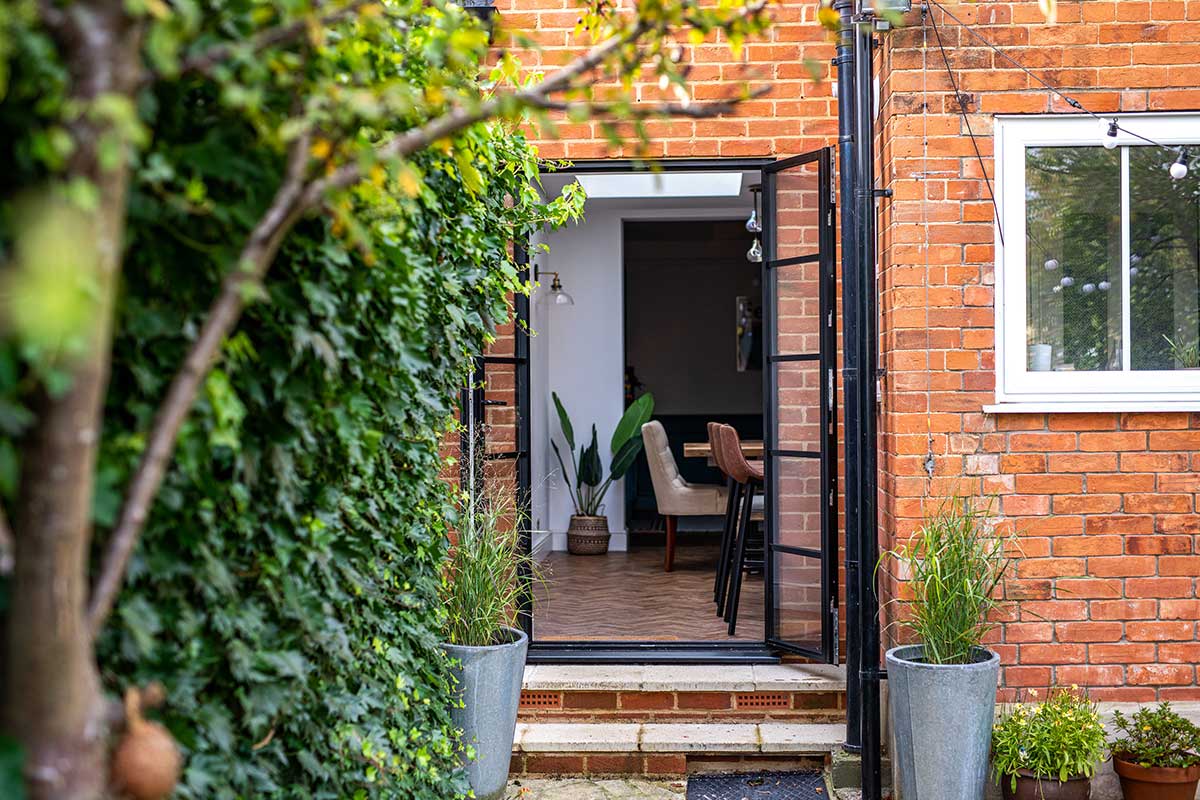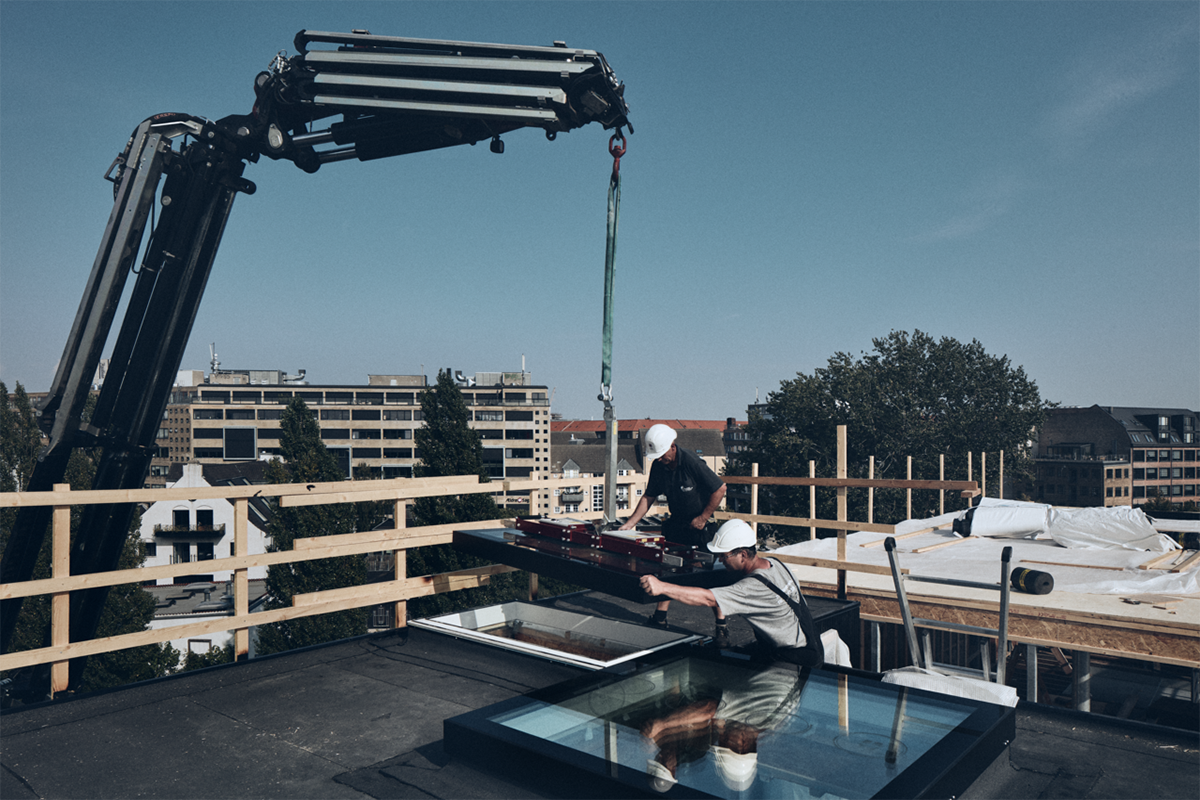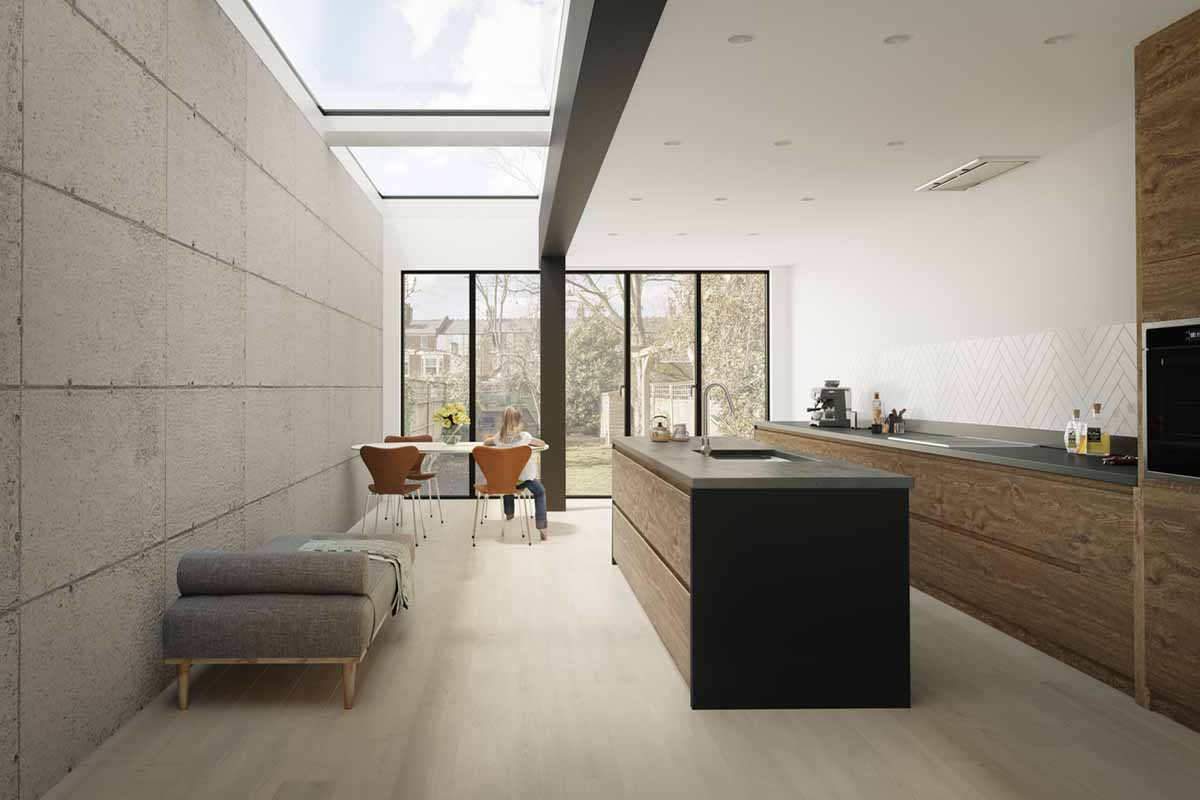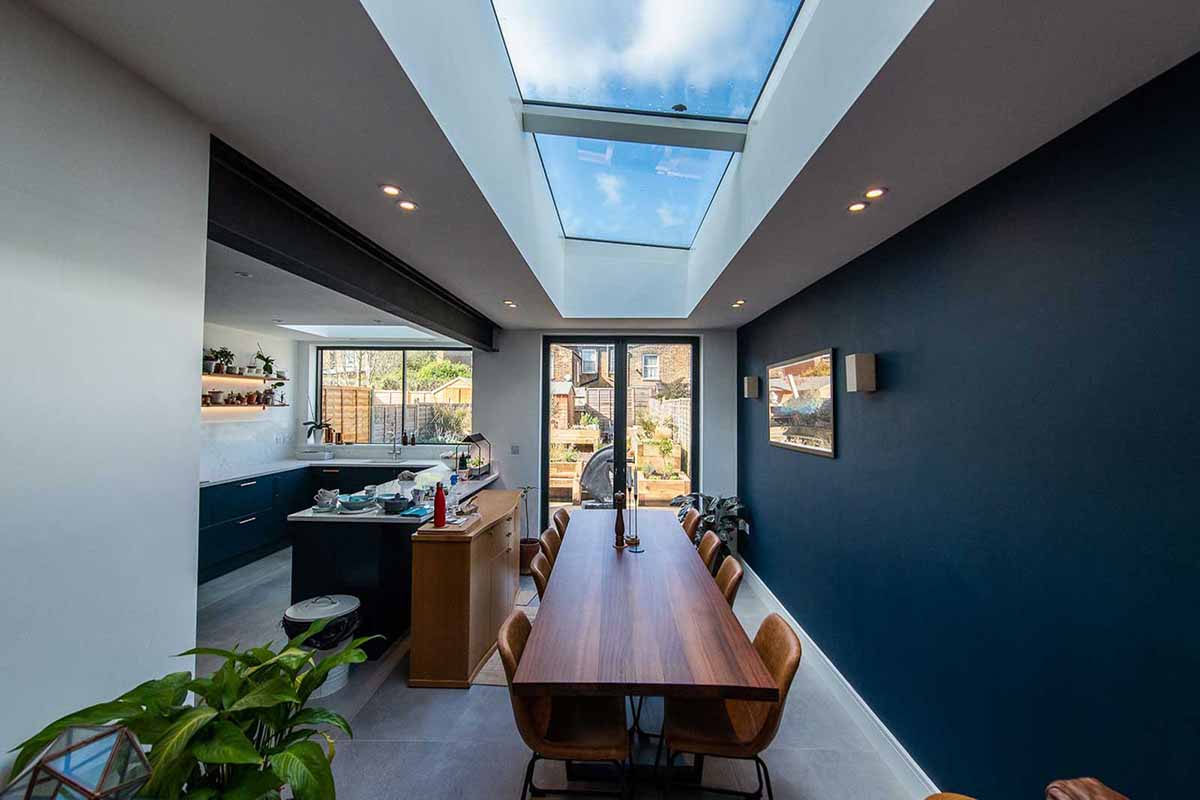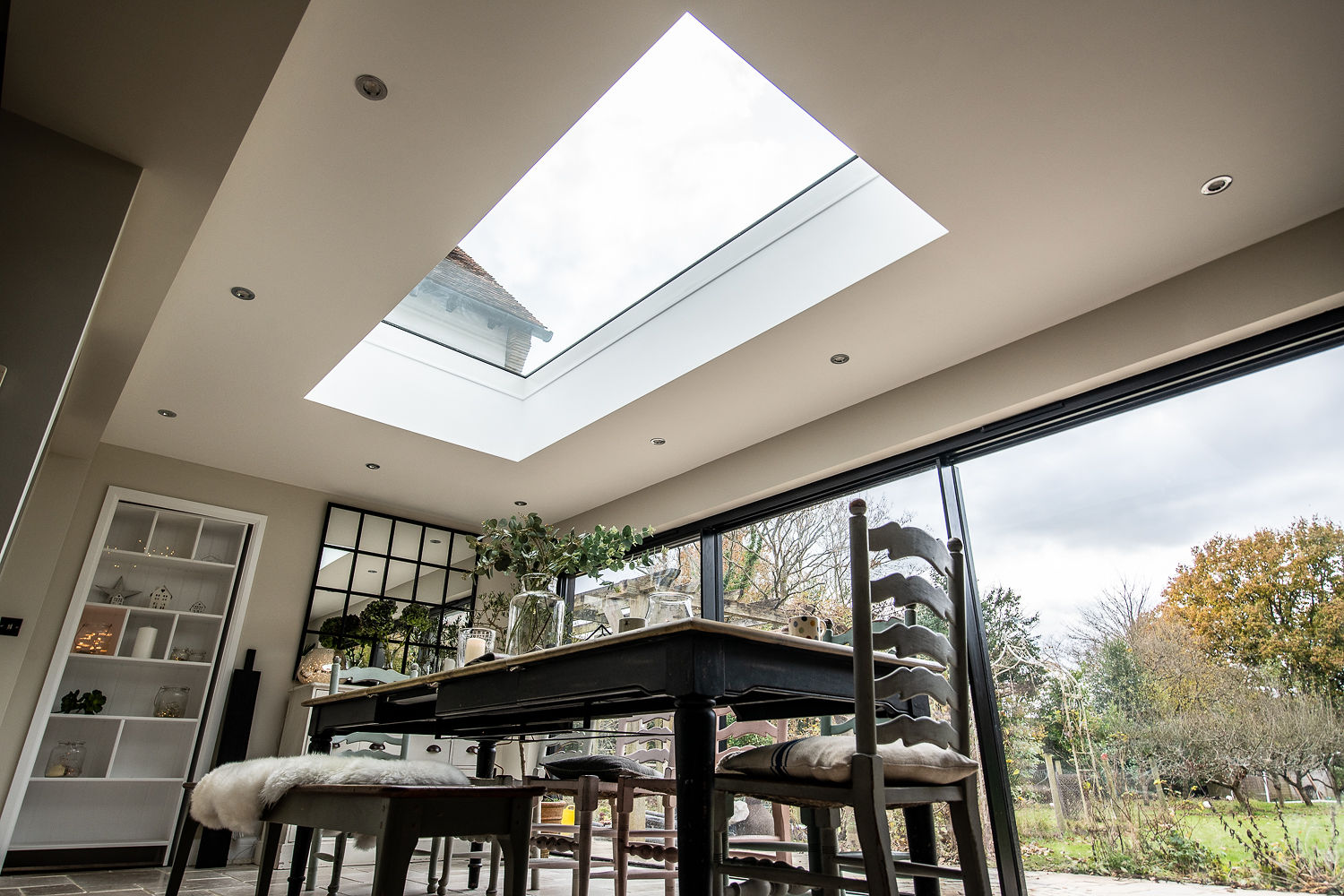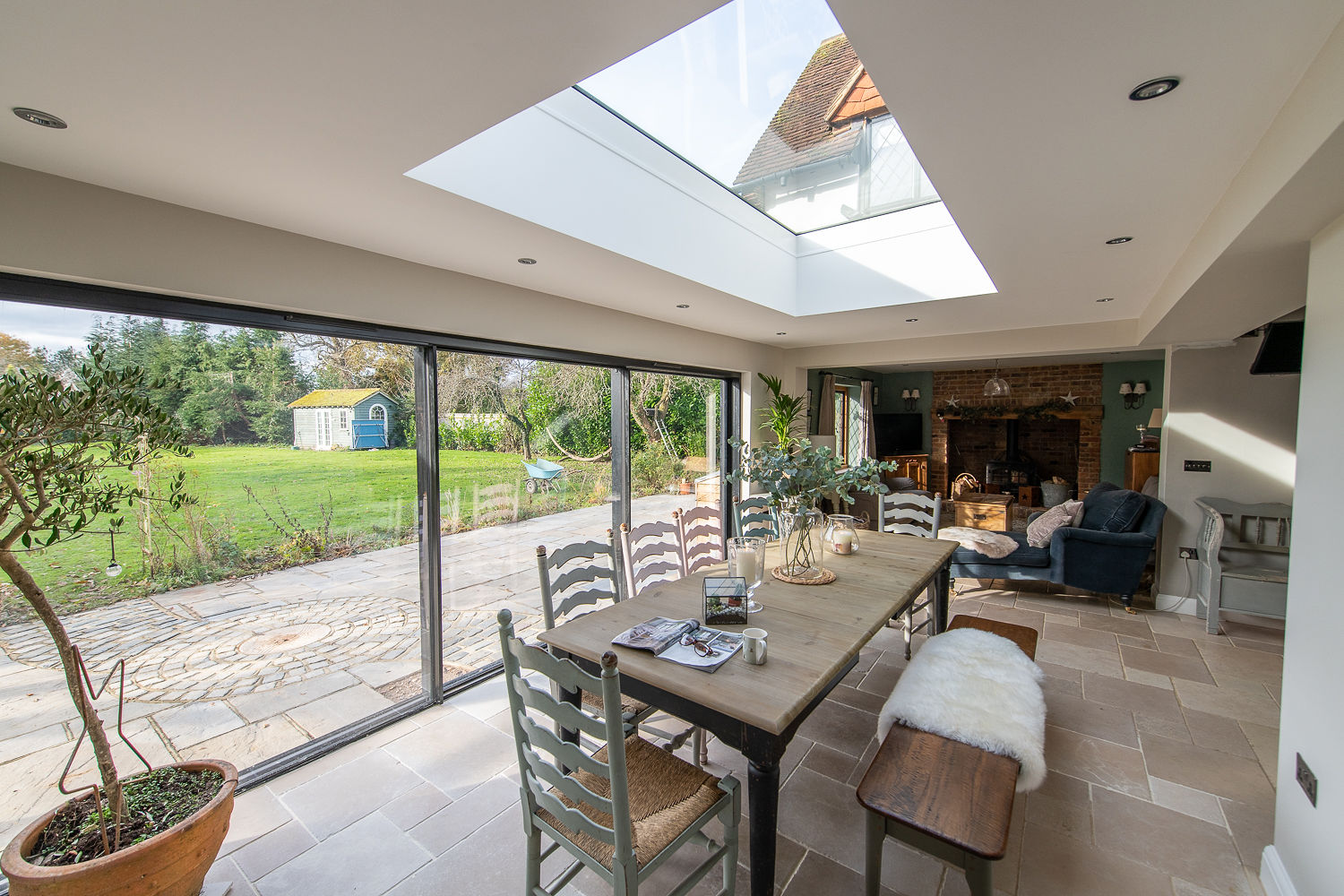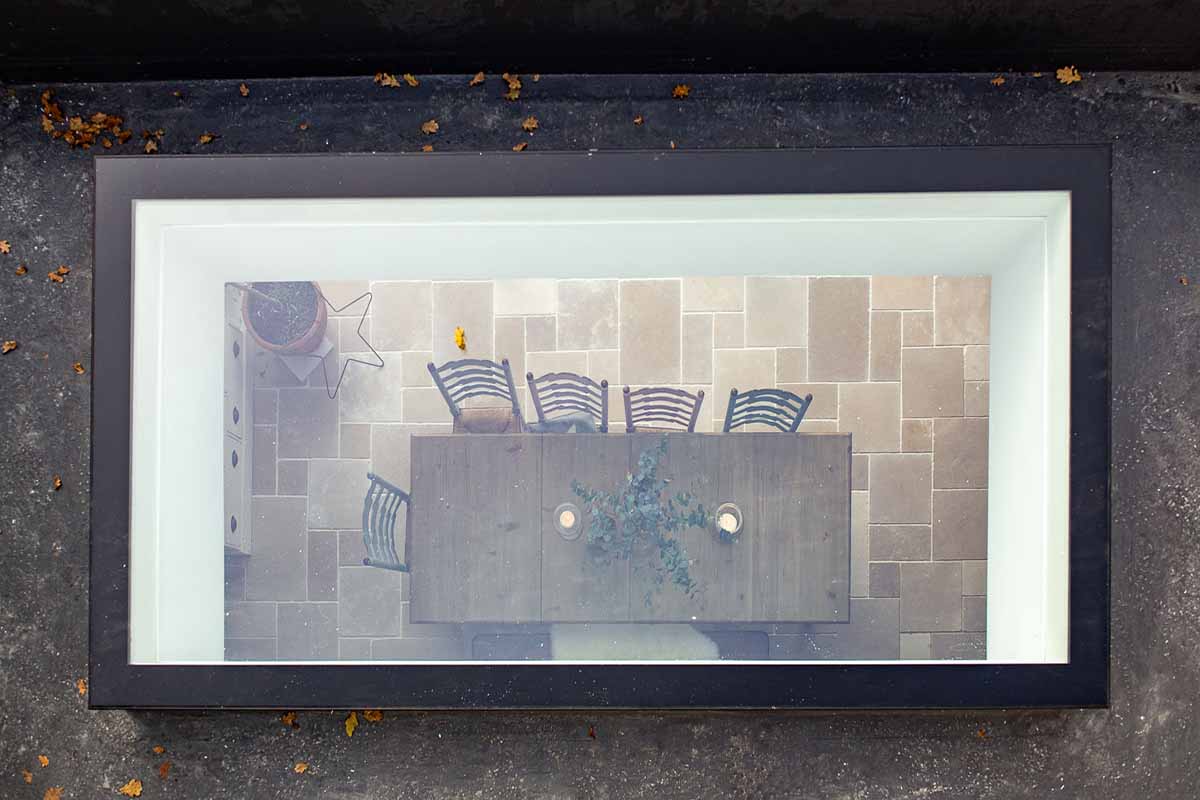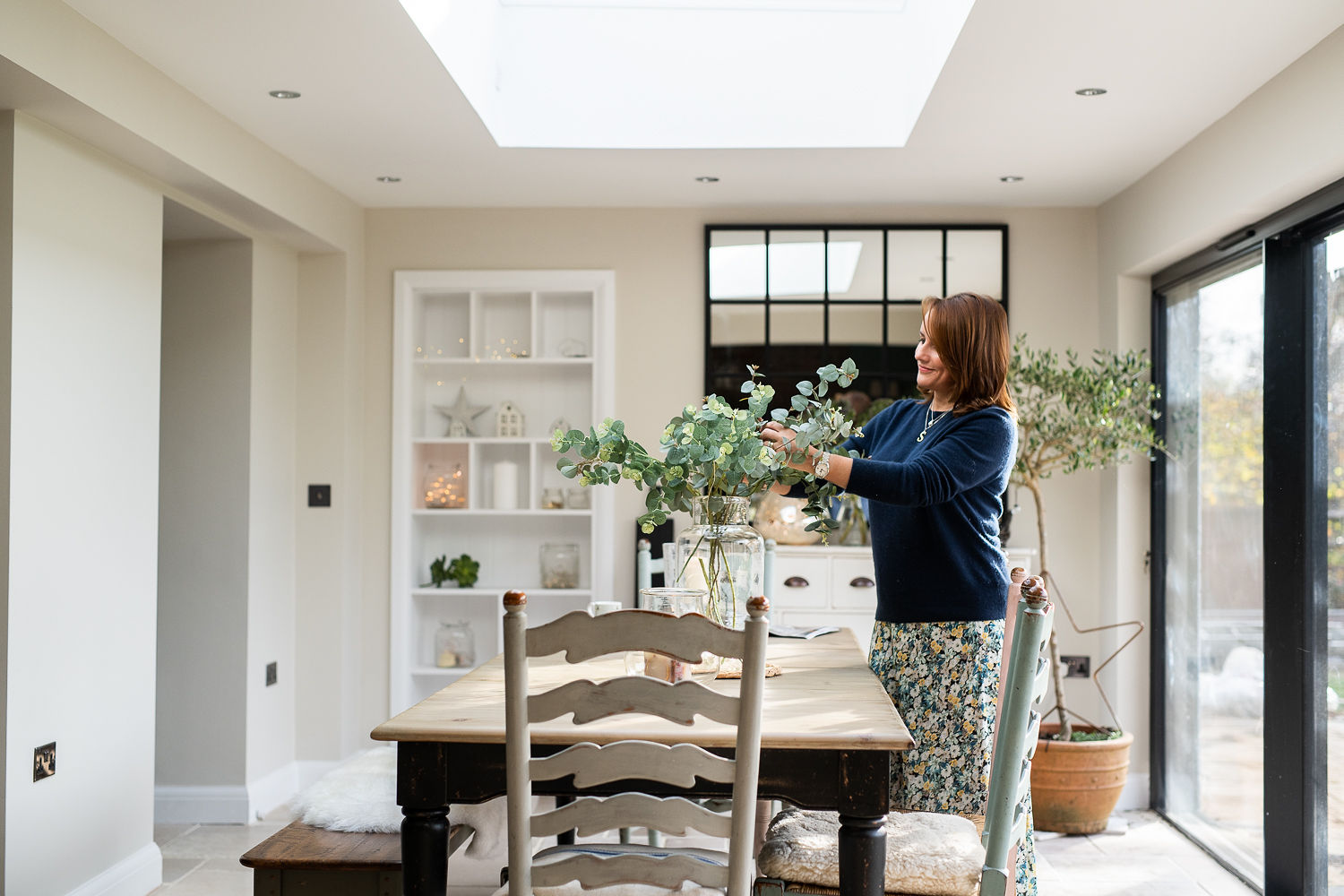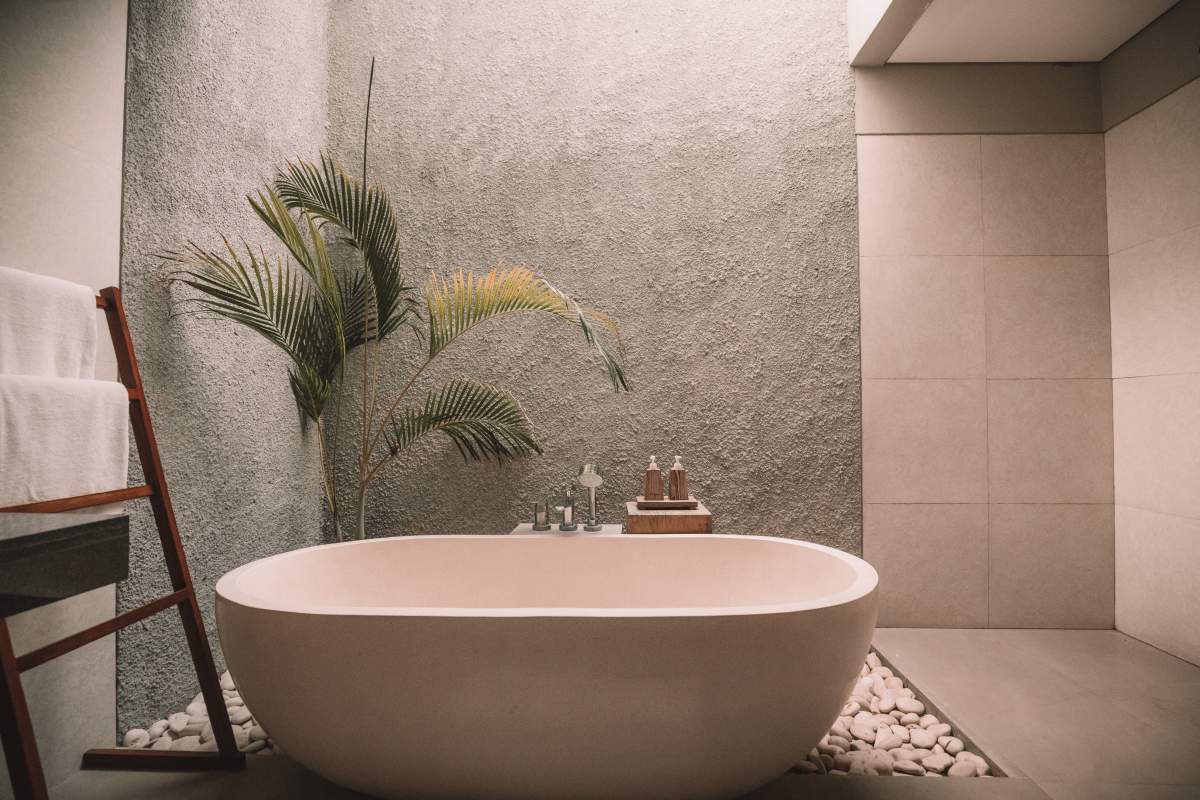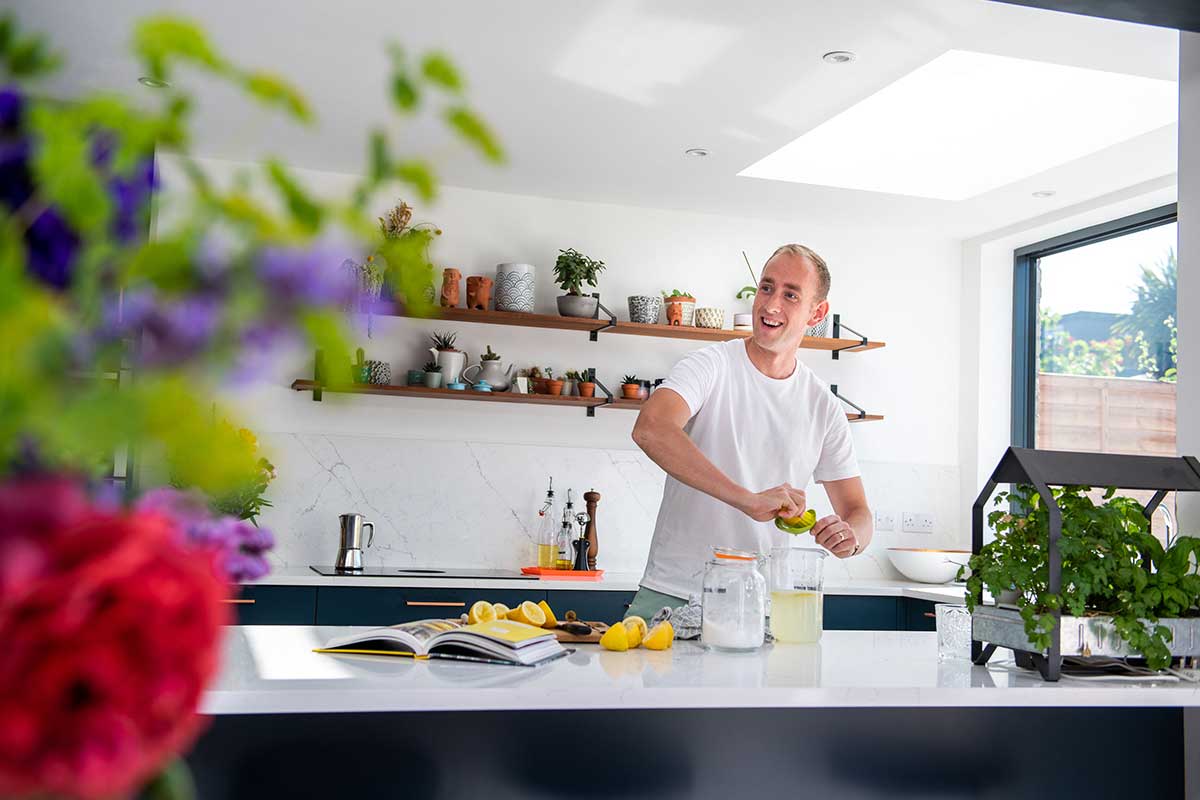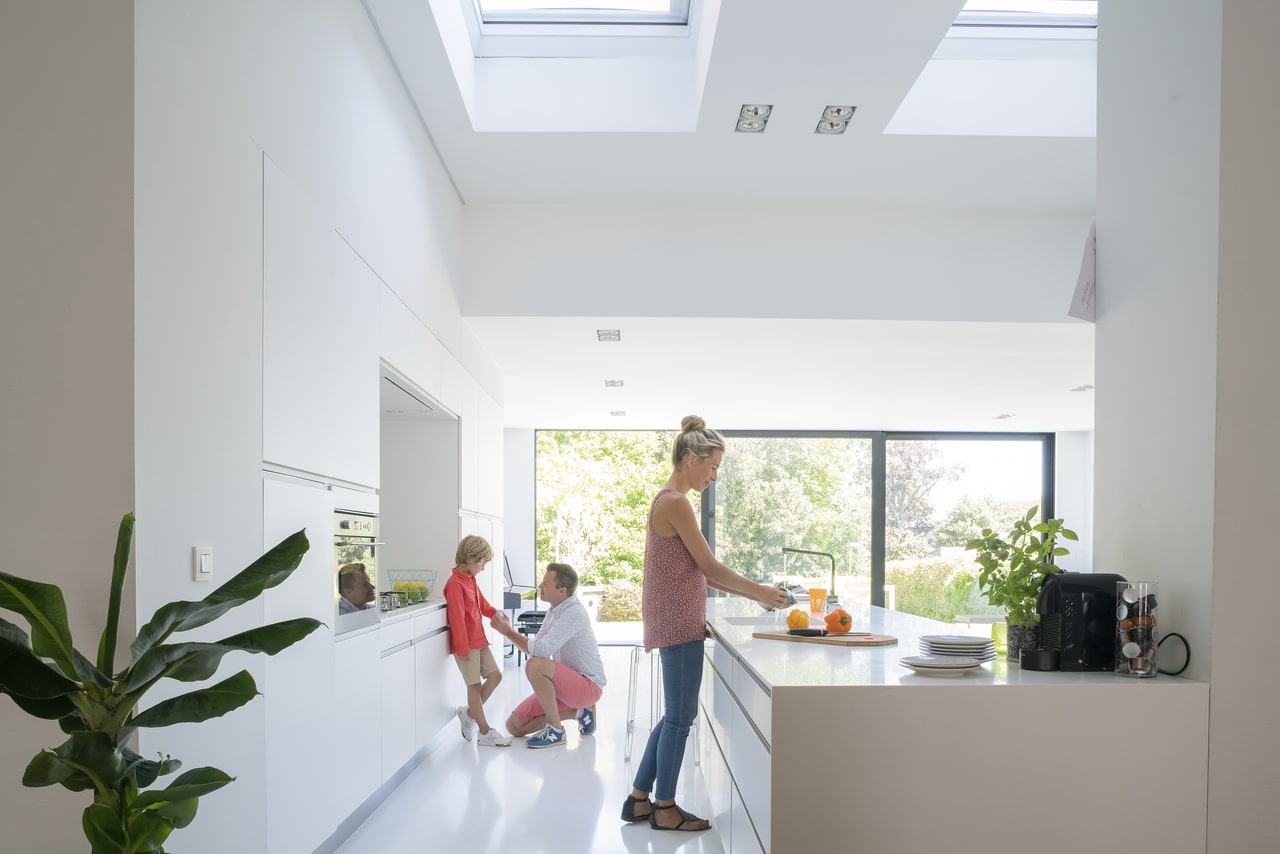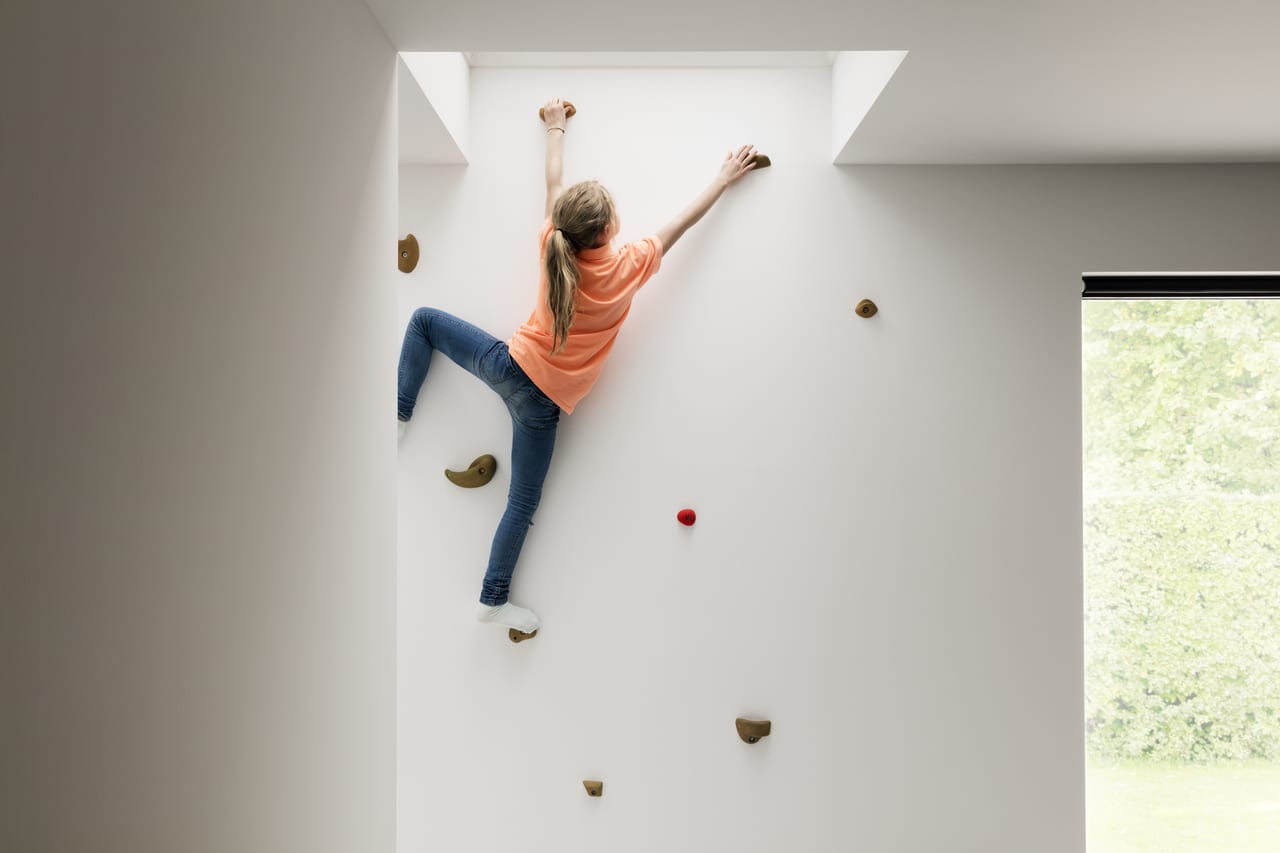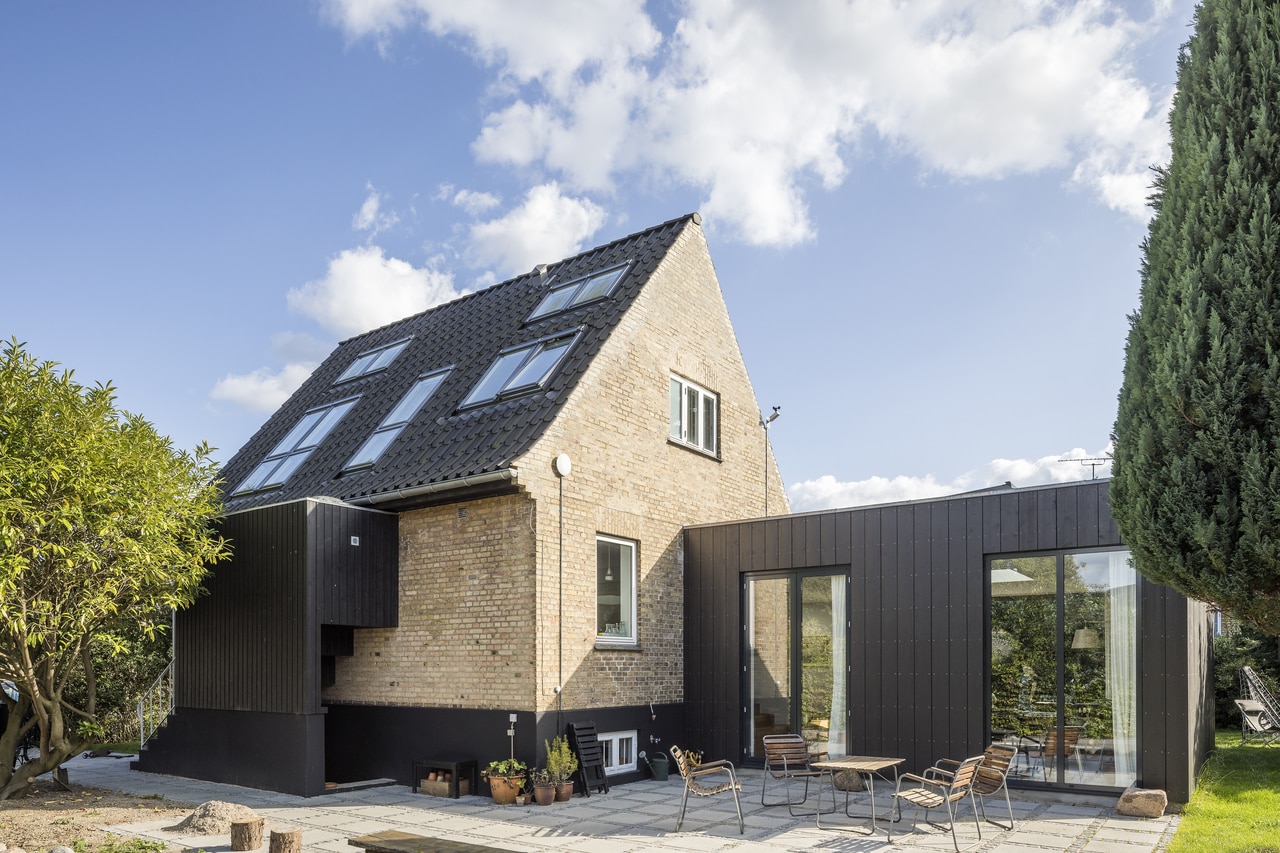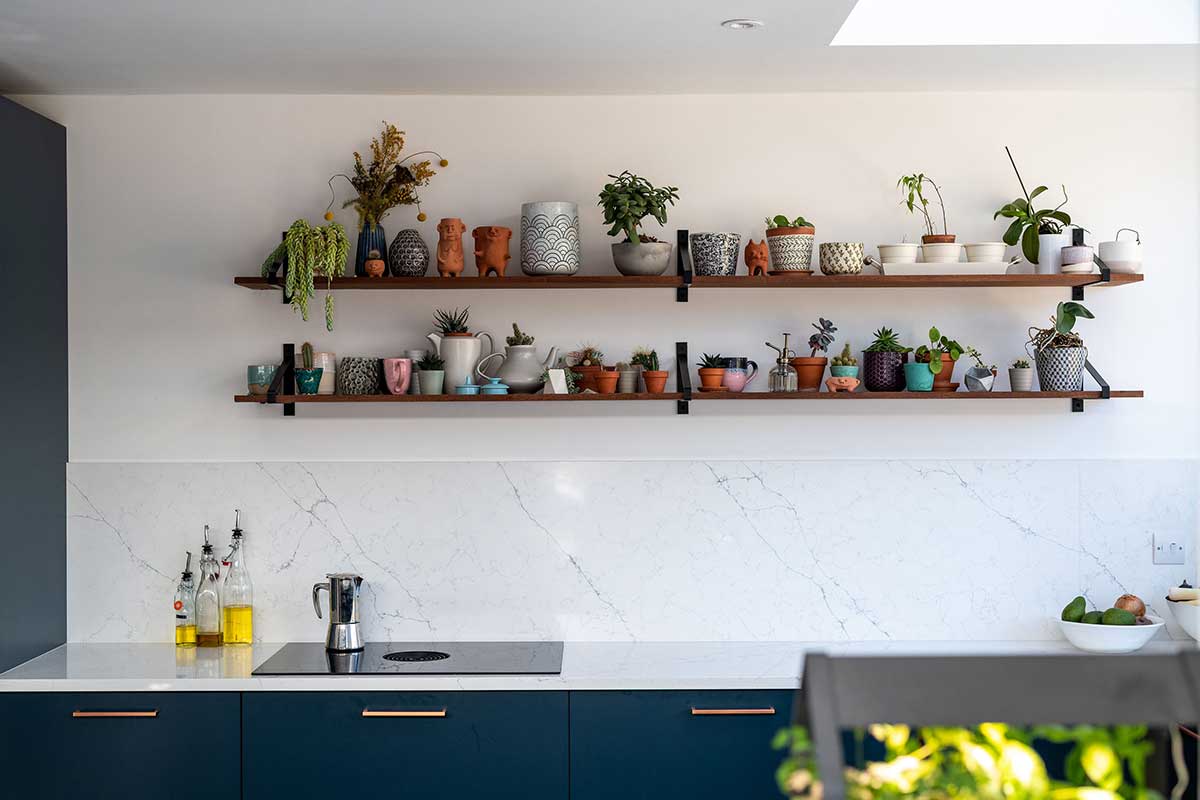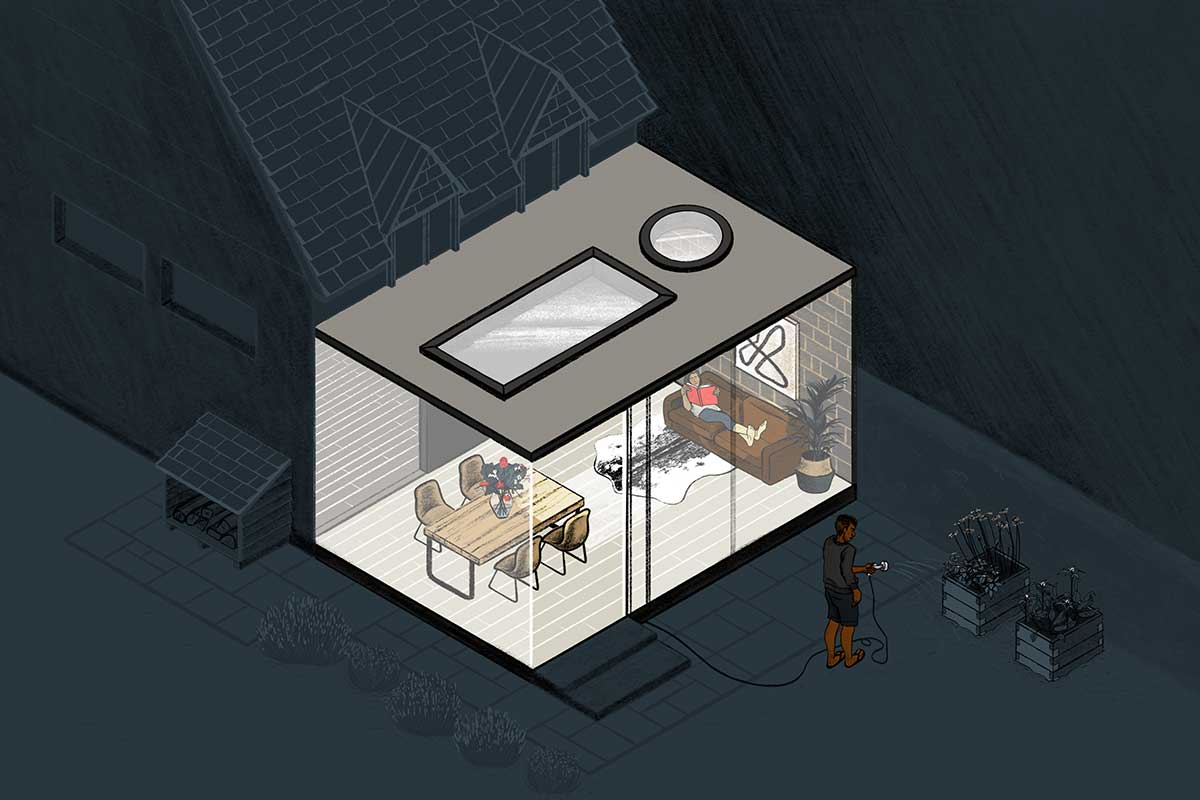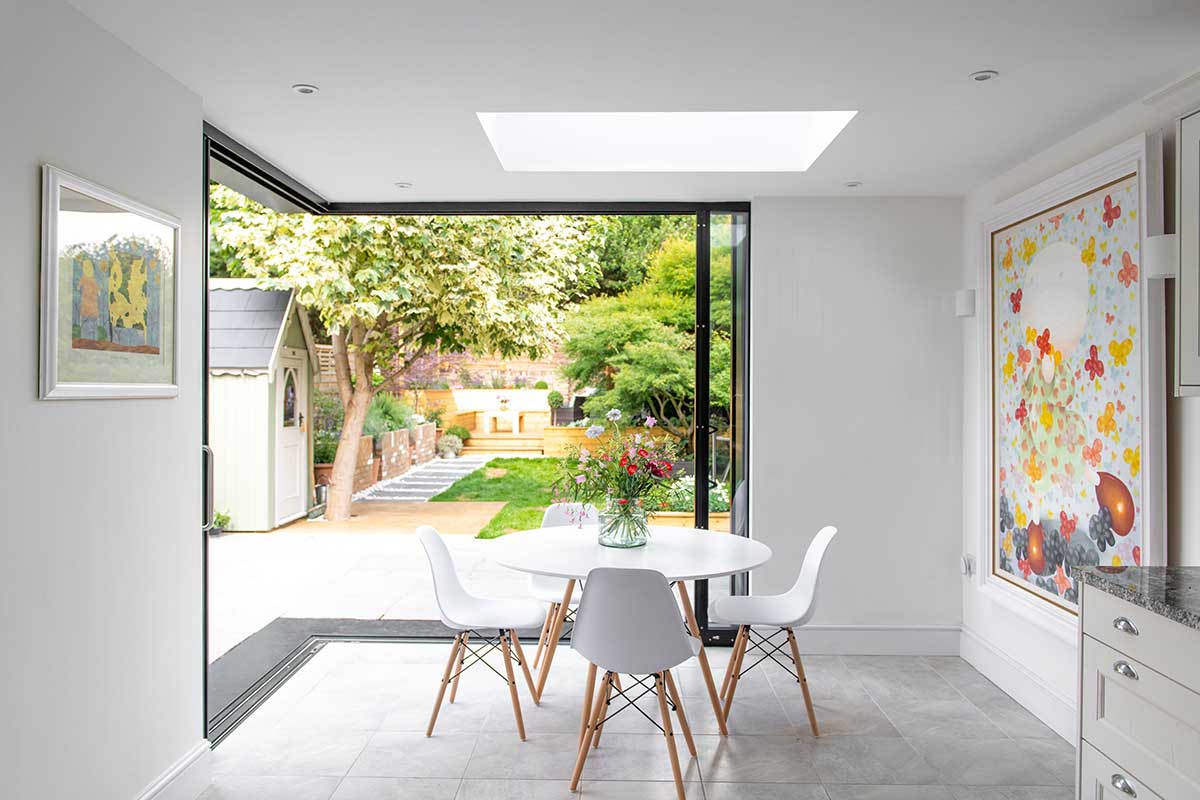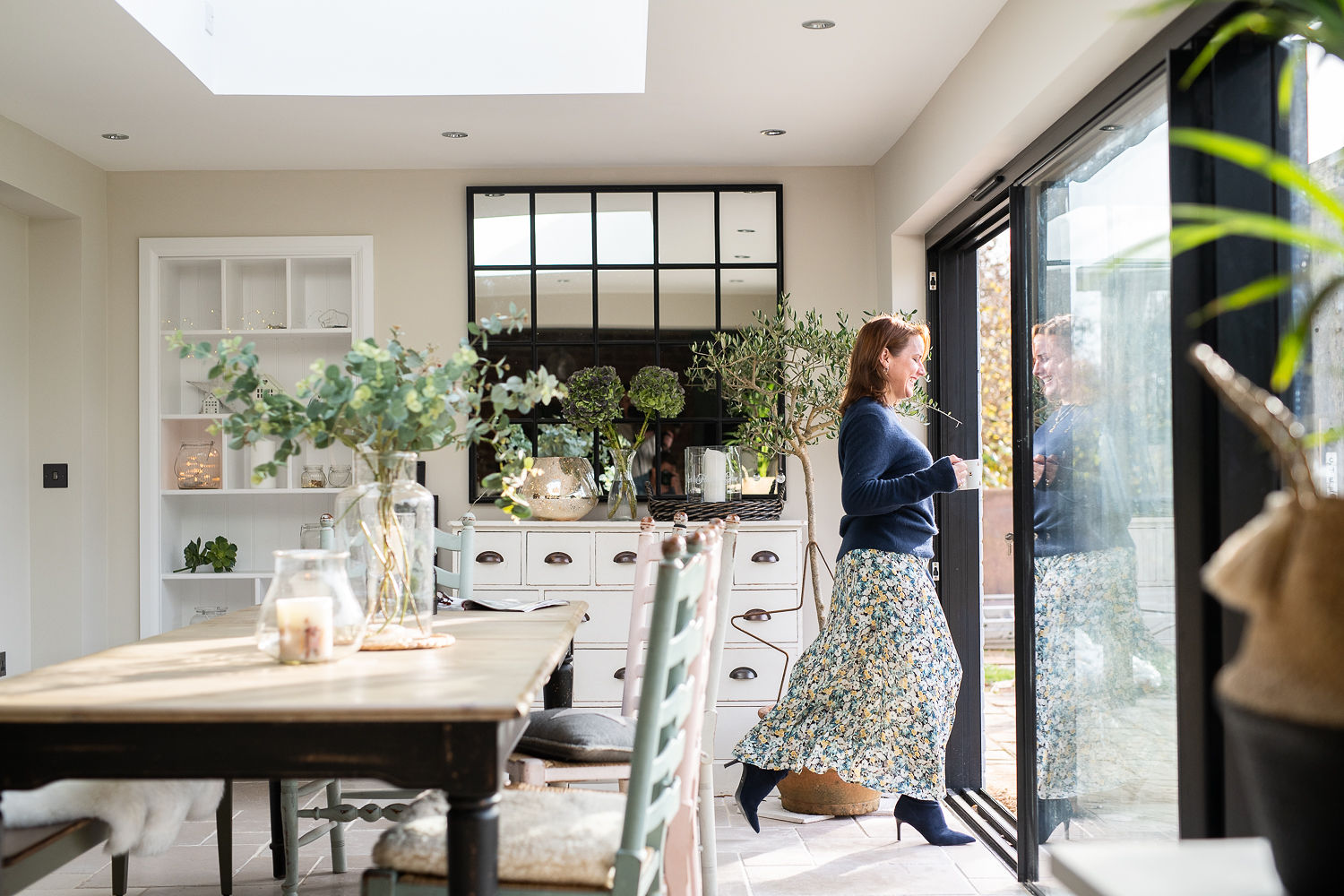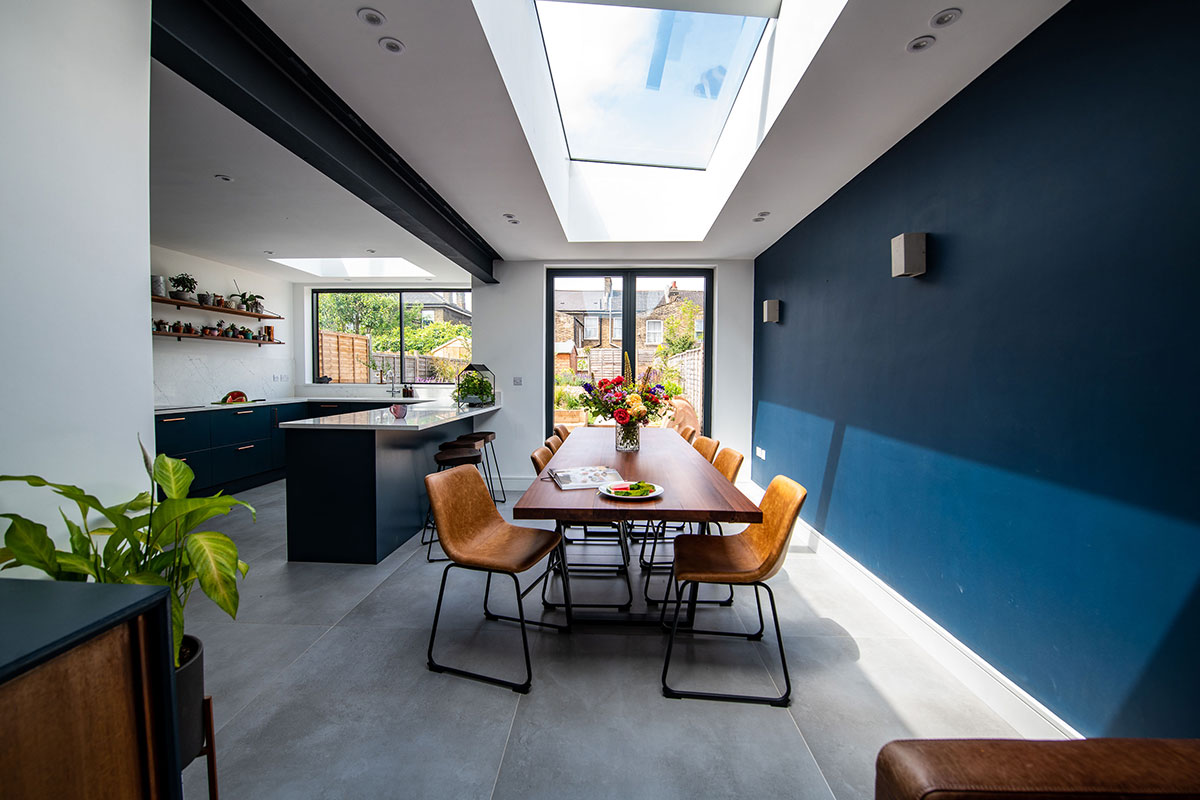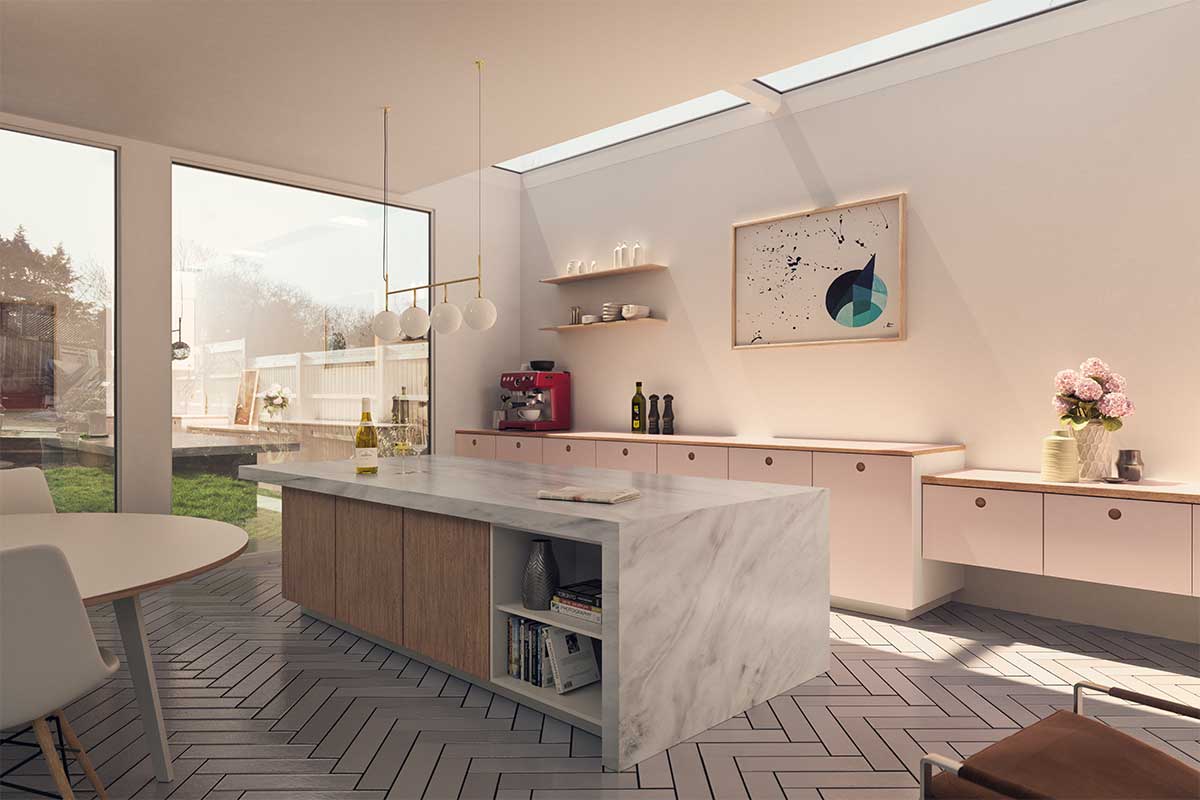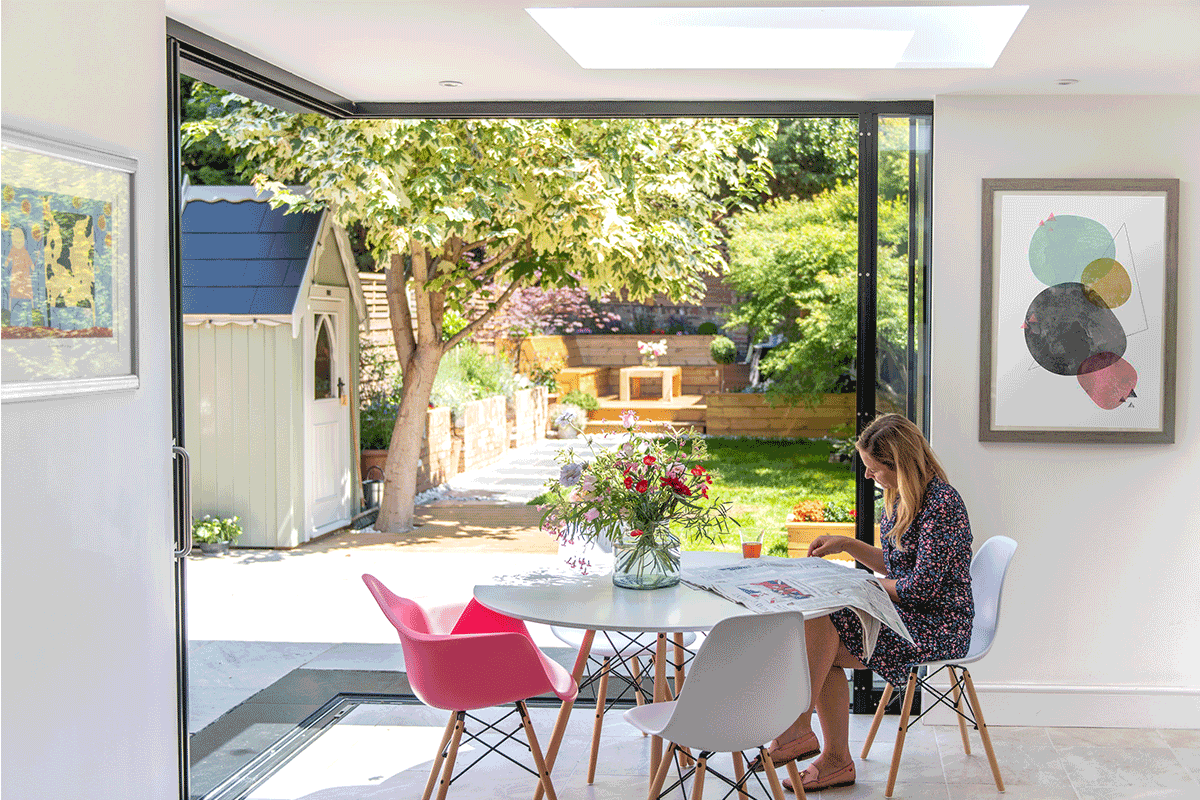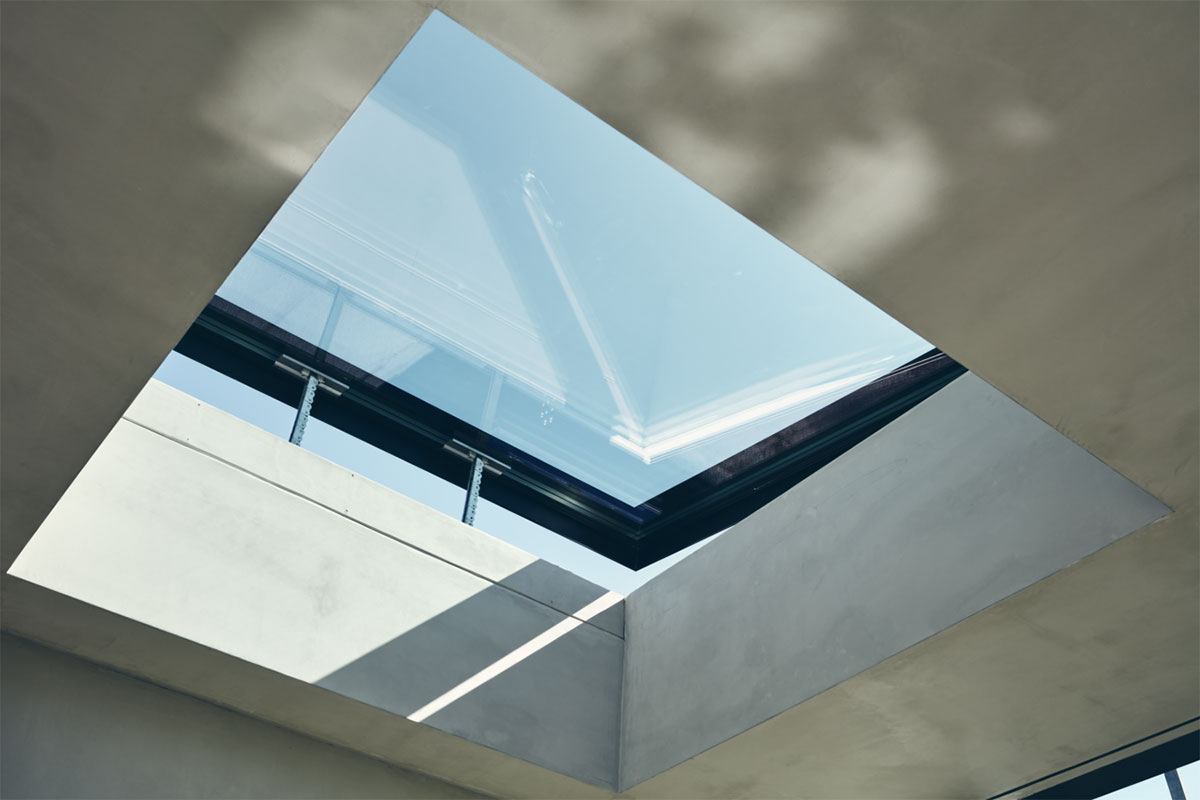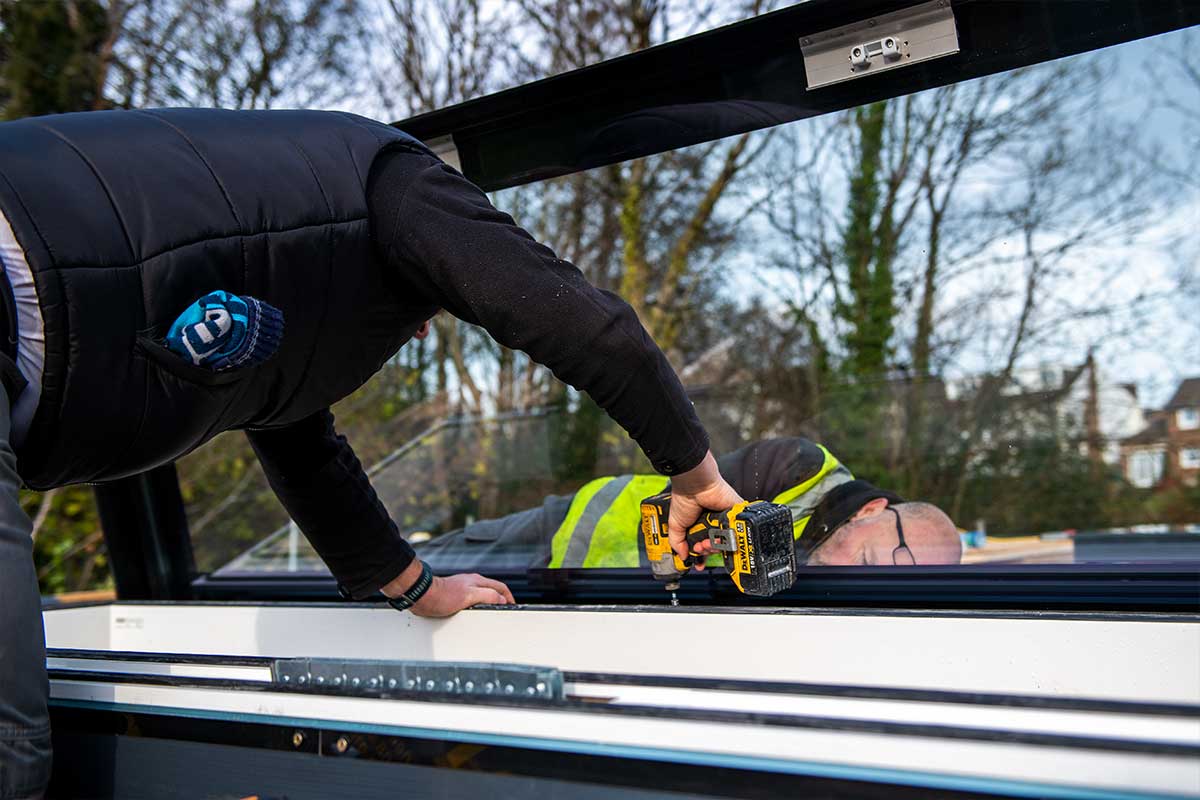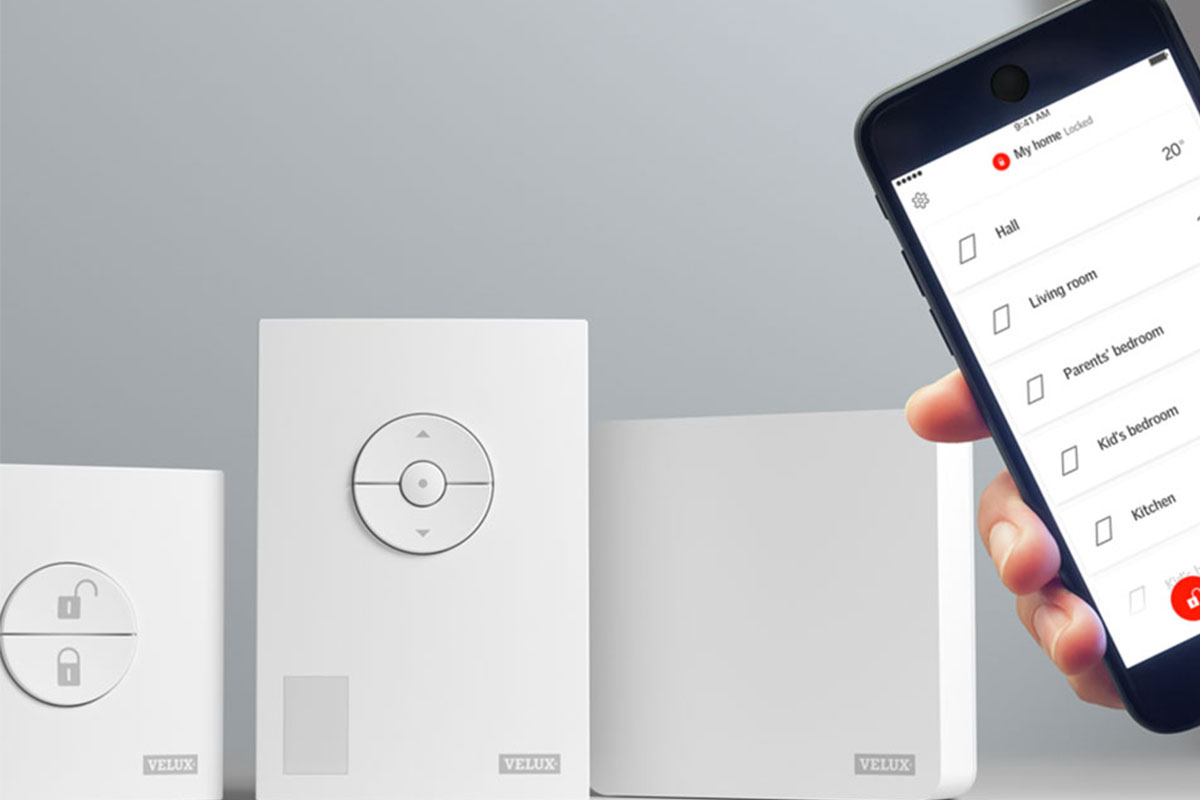5 key considerations when adding a rooflight to your extension
If you’re looking to create a brighter living space and enhance your extension with the unbeatable natural light offered by a rooflight, there’s plenty to consider and a whole host of questions that need answering during your planning process. Are you building a new extension or adding rooflights to an existing extension? Are you looking for fixed rooflights or roof windows with remote controlled opening? Is it for a pitched roof or for a flat roof extension? Do you want classical roof windows or minimalistic rooflights that blend in seamlessly in your new space?
With a myriad of available options in the market, where do you start and how do you choose what is right for you and your family? In order to help you out, we’re happy to walk you through our comprehensive guide and understand why it’s important to answer some of these critical questions…
Are you building a new extension or adding/replacing rooflights in an existing extension?
This is an important starting point, as there will be significant differences in terms of building control and structural engineering, when you install rooflights in an existing building compared to a new build.
Existing extensions
If you’re looking to drench an existing space in daylight and transform your indoor living experience (and why wouldn’t you?), you should start by asking two key questions:
1. Do you need planning permission or are new rooflights within the permitted development rules?
2. What are the building regulations for adding rooflights?
Permitted development
Provided that you’re not actually extending the footprint of your building i.e. extending beyond the current space it takes up, permitted development rules in England and Wales allow the installation of rooflights or skylights without additional permissions. So far, so good. But they come with limiting conditions that make this tricky in practice. The rules say that:
- Any new flat roof skylights cannot project outwards more than 150 mm from the existing roof plane.
- No alteration must be higher than the existing roof.
- Side-facing windows must be obscure glazed with any opening to be made 1.7 m above the floor.
These constraints pose a few challenges, because in most cases even the most low-profile rooflights will require an upstand to ensure secure and reliable installation. This is particularly important when adding rooflights to flat roofs, as many waterproof membrane companies will insist that an upstand of 150 mm minimum is constructed in order to maintain the roofing material guarantee.
The upstand is usually installed on a pitch to allow water to drain off the rooflight, further increasing the upstand height. So in practice, it is likely that planning permission will be required as the rooflight will project more than the allowed 150 mm from the existing roof plane.
With this in mind, it makes sense to seek advice from your local planning authority or your contractor, before commencing work on site to ensure that the proper permissions are in place.
Here you can read more information about planning permissions and permitted planning.
Building regulations
Whether you need planning permission or can add rooflights within the rules of permitted development, you will need to follow Building Regulations guidance for some aspects of your project, such as structural elements and electrical works.
The reason for this is that installing a rooflight means that the existing roof structure will be altered. Factors such as loading capacity, insulation, ventilation and fire performance in relation to the proximity of an adjacent building can all play a fundamental role in the installation process.
Having a rooflight installed should never affect the performance of your roof, which is why such regulatory laws are in place, to ensure that the appropriate safety standards and the overall energy performance of the rooflight are adhered to.
We recommend that you look through the regulatory compliance documents made by the National Association of Rooflight Manufacturers (NARM).
New extensions
If you are building a new extension, you’ll obviously need planning permission and to comply with building regulations. But, when adding rooflights in a new extension or new build project, you’ll probably have an architect or a contractor involved in the project to provide professional guidance and support. Here it’s more important that you communicate your wish for rooflights to be included in your new extension up front, so it is included in the early design phase. This will help you avoid some practical limitations such as beams, loading and electrics. The below questions will hopefully prepare you for some of the discussions you’ll have with the construction professionals involved, during the design phase of your building project.
Where should your rooflights be located?
When building a new house or a new extension with natural daylight from above, one of the first things to consider, is where you would like the light to come in and what effect you’re looking to create. When starting a new build project, you should start by looking at the direction of the windows and the sun. Remember that although skylights let in light all day, depending on the direction your house and room is facing, you’ll get more concentrated brightness at different time of the day. Think about where and at what time of the day, you will need the most daylight in a particular room. For example, you might be considering installing rooflights in a new flat roof kitchen extension and you would like plenty of natural light to flood the space whilst the family enjoy breakfast together each morning. Then you should consider the orientation of the building and where to put the rooflight to make this vision a reality.
- North-facing rooms generally have a colder, more neutral light throughout the day, away from direct sunlight. Artists often choose north-facing studios because the light gives the truest rendition of the colours they are using. Rooflights benefit north-facing spaces, by maximising the amount of daylight you can get into a room all day long.
- For east-facing rooms and homes, you’ll find the light is brightest first thing in the morning – with long shadows and minimal sunlight later in the day. This orientation could be ideal for a kitchen extension if it is where you plan on starting the family’s day.
- South-facing spaces benefit from warm light all day long – but in the summer, the midday sun is very bright. South facing extensions are great for bringing light into both the new extension, but maybe even more importantly also into the existing main house, which will become darker as the roof is extended outwards.
- For west-facing rooms and homes, you will get long shadows and beautiful warm light, as you move into late afternoons. Roof lights in west-facing spaces are particularly useful to make sure you can have as much natural light for as long as possible.
What rooflight sizes should you choose?
Obviously, the larger the rooflight, the more light you will get. But we always recommend our customers to consider the adjacent elements in the building and the interior design of the new space, when selecting their rooflight shape and size. Consider whether you would like the rooflight to align with the size of your dining table, your kitchen worktop or even your bathtub. Alternatively, you might want the rooflight to align perfectly with mullions in your patio doors. Positioning your rooflights nearer to a side wall, will mean that you will still benefit from the light, but you will get your own inverted sundial and experience heaps of indirect daylight in your room. As the sun passes over your new rooflight, light wells will be created in different areas of the room at various times of the day.
When planning your extension, maximising daylight from above should be high on your list of priorities, so choosing the right size and number of roof windows is hugely important. Be it a ground floor extension or a loft conversion, the general rule for creating the natural light infusion you’re looking for is that a room's roof glazing should be equivalent to a minimum of 15-20% of the whole floor space, to ensure daylight drenches the whole area with no dark corners.
What style of rooflight and what features to include?
Once you have decided on the location and size of your rooflight, next consider the best style and features for your project.
Fixed flat glass rooflights don’t open but are usually the most cost-effective option. When choosing this route, it is important for your and your family’s health to consider what alternative ventilation you have in that particular room e.g. windows on opposing sides. Opening, remote controlled, rooflights are ideal for bringing in daylight and ensuring natural ventilation of your living space.
You can add personal touches with frame styling, size, shape and useful features like walk-on capability.
What type of glazing do you need?
Laminated Glass
For safety, the first choice for the inner pane of a rooflight should be a laminated glass, as this minimises the risk of any glass falling into the room beneath if the inner pane should break.
Toughened Glass
Toughened glass inner panes bring a risk of shattering and falling into the room beneath (occasionally spontaneously, but certainly if subjected to impact, for example a falling branch in a storm).
For energy efficiency, it’s important that manufacturers state ‘whole product’ U-values to ensure thermal performance which will allow you to be compliant with Part L Building Regulations. Some manufacturers only quote ‘centre pane’ U-values which do not take into account edge spacers and frame construction. The thermal performance of a rooflight must be considered for the whole assembly, because while glazing may be compliant, poor frame design can affect thermal performance. This can result in higher energy bills for building users and subsequent unwanted higher CO2 emissions.



